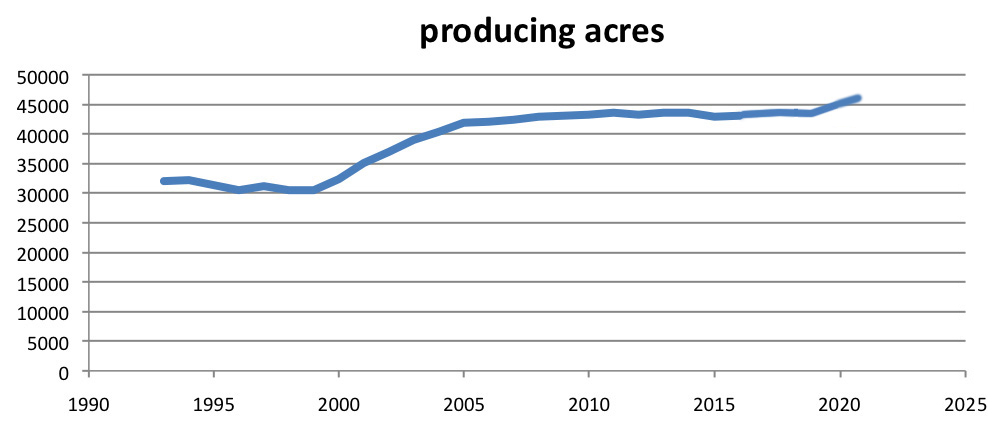
Where have all the vineyards gone?
on the web at: https://sodacanyonroad.org/forum.php?p=1474
Bill Hocker | Apr 20, 2017Update 6/9/22
NVR 6/9/22: Napa's crop value sees big rebound
County Crop Reports page
Update 6/4/19
NVR 6/4/19: Napa County agricultural production tops $1 billion
County 2017-2018 Crop Report Page (producing acreage has remained flat since 2007 but the value of the harvest has doubled. Who says more forest clearing is needed to grow the industry.)
4/19/17
NVR 4/19/17: Napa County's 2016 crops worth a record $737 million -- nearly all wine grapes
The numbers of the latest Napa County Crop Report are out. The county's Crop Report archive is here. The crop reports make for interesting reading even if you're not into crop reports because of the agrarian drawings and paintings of budding young artists that illustrate them. The latest contest winners are here. There are other graphs and photos and news and historical articles as well which liven up the raw numbers.
The ever increasing value of the Napa grape crop is always of great interest to everyone: it is a nominal sign of the health of the industry and the potential for the survival of an economy based on agriculture rather than, say, tourism. The value of this increase was put into a chart in the 2013 Report, page 6 here. Economists and stock market analysts might have some concern when seeing price gains such as these, but obviously the industry takes pride in the numbers. The increased value of the crop probably comes from different sources. The often stated reason is that the wines made from them are so good that the price is justified. In fact, it is probably simple supply and demand: as the total crop is divided among more and more vanity labels (175 new wineries have been created since 2006), each willing to pay any price to build their high-end brands, the price has exploded.
From an urban development standpoint it is not the rise of the crop value, but the stability of the supply that has interested me. In 2016 43,000 producing acres of grapes were harvested in Napa County. In 2006, the number was 42,188 acres. In 2008 it was at 42,870 and has gone up and down by less than 2% since, a normal seasonal variation.

Yet my intuition over these 10 years, as I have driven up from Berkeley each weekend, is that a fair number of vineyards have come online in that period. Is it true that vineyard creation stopped in 2006?
In the article (and later directly verified), Planning Director Morrison indicated that 4,347 gross acres of vineyard development has been approved since 2006, a period in which approvals have been slowing. That would translate to perhaps 3477 net acres of actual vines. While not all of those would be producing acres in 2016, it can be assumed that there is an equal quantity (or more) of vineyard acres approved before 2006 that began producing in the 2006-2016 period. So at least 3400+ acres of new vines have probably been added to the "producing" acerage since 2006, but only a 1000 acre increase has shown up in crop reports.
Why are approvals for new vineyard developments not translating into a similar increase in the Napa crop acerage being harvested? Where are the missing 2400+ acres? From the perspective of someone concerned about the urban development of the county, I would like to know what that missing acerage is currently being used for.
copyright © sodacanyonroad.org
